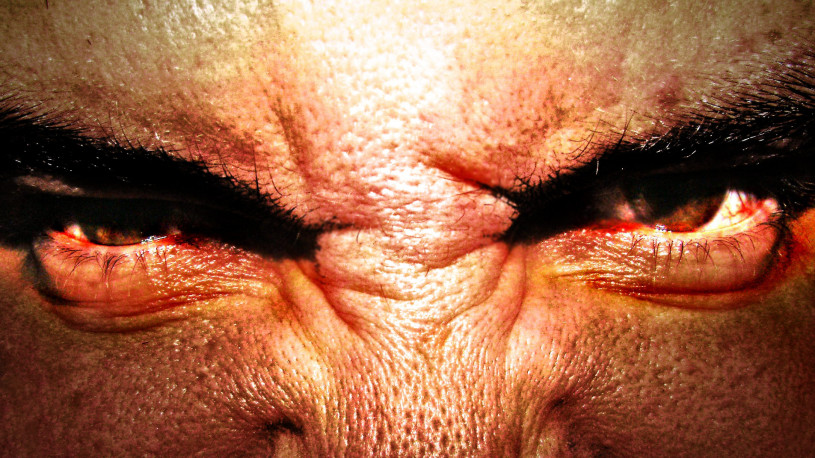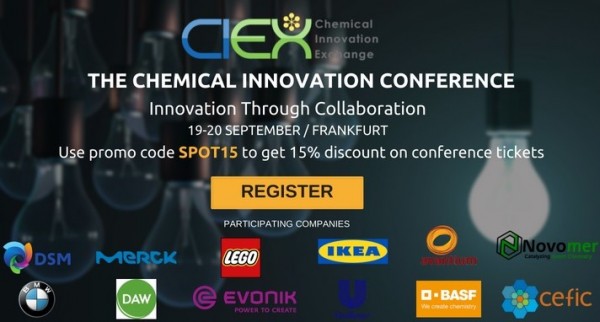-
Does Knowledge = Power in the Chemical Industry?
 Continue Reading
Continue Reading‘Knowledge is power’, said the philosopher and essayist Francis Bacon; and he should know, as he was very knowledgeable indeed.
And if this was true in 17th century England, when Bacon first wrote those words, it is definitely true now. In an age of hacking, industrial espionage, trade secrets, and confidentiality clauses, the chemical industry has become a highly secretive place. Raw material sources are kept secret, prices are ‘upon request’, and chemical formulas are locked in vaults (patent pending).
Yet, with public concern growing over the chemicals used to make everyday products, chemical companies are finding themselves in an increasingly defensive media war.
As the news industry struggles to maintain 24-hour news feeds, Tweets, and minute by minute coverage of events, media outlets are heading towards the ‘shock and horror’ stories that gain clicks and advertising revenue. Chemical leaks, factory explosions, oil spills, and expensive legal cases against chemical producers are all targets for such negative coverage.
Added to this negative façade that the chemical industry wears, are true global concerns of climate change and the circular economy.
Unfortunately, public perception of the chemical industry’s impact on the environment is equally destructive.
As a result, there are signs that the chemical industry has begun to ‘circle the wagons’ and is now acting more as a team. It is beginning to see the benefits of cooperation.
As the World Business Council on Sustainable Development reports, “To deal with the coming challenges, a multi-stakeholder approach is required. Companies in value chains can, for example, combine their data to calculate the ‘avoided greenhouse gas (GHG)’ emissions because of the use of chemicals in their value chain.”
Similarly, in a recent interview, Thomas Arnold, CEO of the chemical manufacturer Biesterfeld, outlined his ideas on the importance of chemical industry cooperation prior to the 2018 Annual Congress of The European Association of Chemical Distributors (FECC). Here he stated that, “it is important to discuss new ideas, strategies and market potentials with our partners and to be open for business expansion and innovative solutions. To mutually benefit from a long-term business partnership, we need to rely on each other and continuously work on boosting our relationship.”
At the same event Karsten Beckmann, a member of the management board at Brenntag, had similar thoughts, stating that, “As in each partnership trust is an integral part – this also applies for chemical distribution. For us it is crucial to listen to the individual needs of customers and suppliers in order to be able to offer them the solution they need. It is all about communication, coordination and flexibility.”
As Jens Cornelissen, general manager of the Merlien Institute, notes, “Rather than guarding innovations behind locked doors, organisations are increasingly understanding and embracing the value behind more open approaches for driving innovation. Alongside this emerging – and increasingly ‘open’- mindset towards innovation approaches, comes a need to assess how innovation is spearheaded and implemented across the organisation. This entails reviewing, and potentially transforming, innovation frameworks, processes, and expectations to ensure excellent commercial outcomes.”
Meanwhile the global trend of adopting shared databases on chemical safety, such as REACH, is widely seen as being a huge benefit to chemical companies in those regions fortunate to have one.
Even China’s current 5-Year Plan is relocating chemical businesses to chemical parks to ‘enhance innovation and synergies between material flows, logistics, engineering and environmental protection’.
No one, however, can deny the power and profit to be made from the knowledge of individual chemical products. Where would Chemours be without the patented knowledge of Teflon, or DuPont without Nylon? But beyond reaping the benefits of R&D, cooperation can aid chemical companies in the greater challenges of the 21st century; the circular economy, legislation, public image, trade, & climate change.
So, is knowledge power? Maybe, but increasingly in the chemical industry, shared knowledge leads to greater power.
Like many chemical industry leaders, international experts and innovative thinkers, Jens Cornelissen will be attending CIEX 2018 being held in Frankfurt on September 19th and 20th. The event has been created for R&D and innovation experts from the consumer, industrial and specialty chemical sectors, and is a unique platform for participants to learn, exchange ideas, and collaborate.
Photo credit: Freeimages
-
Chemicals and Connectivity
 Continue Reading
Continue ReadingEven though the chemical industry is full of data and analysis, there are still many unknowns. Global communication is at an historic all-time high, yet there remains a massive amount of disconnection and misunderstanding within the chemical industry.
For example, how well do chemical producers predict future prices? How well do manufacturers understand chemical legislation? How well do they track public trends, or predict the introduction of chemical product restrictions?
Connectivity in Chemical Industry Influencers
With the EU’s REACH program now fully operational, and other regions close to achieving similar legislative models, chemical companies and downstream users are discovering that they need to have a clearer understanding of how their products are or could be regulated and the related impacts.
As Lorenzo Zullo, Managing Director and co-founder of Chemycal, observes, “in terms of regulatory frameworks, what we are seeing is more and more specific chemicals targeted by regulators. The challenge”, he believes, “is to predict future legislation. Governments don’t just wake up and suddenly decide to regulate the use of a chemical. Generally, everything starts from scientific studies that demonstrate the hazardous properties of a specific chemical. Once the hazardousness is know, attention moves to its use and how it could adversely impact human health or the environment. The outcome of the studies are usually picked up and further investigated by various stakeholders. When it emerges that there are clear potential repercussions on the environment or on particular segments of the society, such as workers, consumers or children, that’s the moment when the problems is brought to the table of regulators and governments starts to act. From this perspective, NGOs and other interest groups plays a catalyst role, speeding up the time needed for a ‘problematic’ chemical to be brought to the attention of regulators.”
In order to predict changes in chemical legislation and potential impacts to companies’ business, there is a need, therefore, to monitor and collate all the inputs and influences that go towards creating chemical legislation.
But with so many influences on governments, how can chemical companies keep track of every participant in the process? Zullo believes that his company has developed a tool that could represent a solution: Chemycal combines IT technologies (i.e. automation and machine learning) and human expertise to collect data from worldwide stakeholders and information sources, link it to chemicals and regions, allowing companies to keep full control of their portfolio of chemicals and products.
An explicative case study is available on the post “Are changes in chemical legislation and potential impacts to your business predictable? Case study: Dechlorane Plus” that he published on LinkedIn.
Connectivity in Chemical Supply Chains
As Zullo observes, “The chemical industry itself might not always have a full understanding of how their chemicals are later used along the supply chain. This is because the communication across industry up and down supply chains is very often discontinuous.”
Zullo clarified his ideas in a recent interview for CIEX 2018 when he explained how, “Information on how chemicals are used along the supply chain is not always accessible to chemical manufacturers. What is needed is innovation and improvement of processes on how actors in the supply chain interact and exchange information, possibly via a single communication system.”
CIEX is the premier event created for R&D and Innovation experts from the consumer, industrial and specialty chemical sectors. Every year, CIEX brings together all players across the value chain to create a unique platform for participants to learn, exchange ideas, and collaborate.
One of the main reasons why a single communication system has never been implemented before is the difficulty to define a model that could operate globally and, most importantly, that could be trusted; some information on chemicals might be subject to business confidentiality. Companies require warranties that the information is managed and stored in a robust and traceable manner and can be accessed by authorised parties.
As Zullo states, “blockchain is a technology potentially highly suited to address this challenge by creating a single, global, secure and trusted infrastructure to exchange and track chemical-related information along supply chains and across sectors”. He is working on the development of a unique global open-source blockchain infrastructure, called “ChemChain” and a standard communication protocol to track and exchange information on chemicals along supply chains and across sectors. ChemChain will provide efficiency, security, reliability, targeted accessibility and transparency among economic operators at different levels of the supply chain.
According to Zullo, “ChemChain would enable tracking of chemicals throughout their lifecycle, enhancing companies’ connectivity and stimulating the establishment of chemical-sustainable circular models.”
Zullo is not alone in thinking that connectivity across the supply chain is one of the keys for enhancing innovation in the chemical industry. Connectivity can be used not only to improve chemical business along the supply chain, but also during production itself.
BASF already has its Sustainable Solution Steering in place; a tool for chemical companies to “evaluate the entire value chain considering industry- and region-specific views in chemical markets.”
Its methodology is to analyse outside influences on specific chemical products. In doing so, it evaluates three key areas:
- Growing customer needs to differentiate with sustainability.
- New regulations and standards in value chains.
- Changing societal and business environments prompting demand for sustainable products.
Meanwhile, BioMar, a leading producer of animal feed is applying the same process to its supply chain. The result is that by, “… year-end it will have finalized a full source-to-market sustainability rating of its entire raw material portfolio.”
However, while the BASF solution and BioMar’s progress focus mostly on the sustainability of raw material inputs and their journey to the consumer, there is a growing need to develop a platform to assess a chemical product’s path through regulatory issues.
Connectivity in Chemical Production
Patrick Deruytter, VP Northern Region Europe for Emerson Automation Solutions, sees setting up an interconnected process for chemical manufacture as something that is integral to the chemical industry’s future.
In a recent interview with the industry journal, Process Engineering, he discussed his vision for connectivity when he said that, “While the chemicals sector must react as best it can to political/economic pressures that it cannot control, it can shape its digital future to ensure unprecedented levels of productivity and competitiveness.
In terms of running a chemical processing plant along data analysis guidelines, he sees the progress made in the automotive industry as a classic example. He observes how, “Twenty years ago there were many more independent dealers and garages, the job today has changed significantly – you bring in your car, they bring out a large diagnostic device and they plug it in.”
Through this technological step, he sees a similar step being made in chemical production. “I think that, for all connected services, we are going to see that trend accelerating,” he notes. “That means a need for diagnostic devices, extended access to huge databases… which will require deeper knowledge, more investment.”
It will also require plenty of innovation. For while technology is creating new opportunities daily, it is only by innovating connectivity between all parts of the chemical industry supply chain that improvements can be made.
Connectivity Among Chemical Industry Professionals
This is because innovation in chemicals does not just come from the chemical industry and chemical researchers. Innovation also comes from the influence of other entities; governments, NGO’s, pressure groups, lobbyists, the media, and campaigns against individual companies.
It is for this reason that Zullo is participating in the upcoming CIEX 2018. An event he sees as, “… an ideal opportunity as it brings together a broad range of actors from across the supply chain.”
As Zullo notes, “Innovation is only possible with full cooperation across the supply chain.”
At CIEX it is possible to connect, discuss and discover the most compelling ideas emerging globally with an unmatched group of innovators from companies such as Merck, DSM, BASF, Cefic, Lego, IKEA, DAW SE, Avantium, Evonik, Unilever, Covestro and many more!
This year, CIEX is scheduled to be held on September 19-20 in Frankfurt, Germany.
Photo credit: Freeimages
-
The Emotion of Chemical Industry Supply Shortages
 Continue Reading
Continue ReadingThere has been a spate of stories in recent months spreading fear of shortages of major chemical feedstocks. But how accurate are they? Fake news? Click Bait? A growing trend? Or simply a part of the natural economic cycle of supply and demand?
One of the most popular stories is the increased demand (and slow increase in supply) of cobalt, a metal used in modern batteries.
Cobalt Shortages
As the BBC reported in June 2018, companies searching for Cobalt deposits were causing a new form of gold rush. The report noting that, “In the past, cobalt supply depended on the markets for copper and nickel, more valuable metals that are typically extracted alongside cobalt. But with cobalt prices on the up and consumption projected to rise by between 8% to 10% a year, its status as a by-product has started to change.”
Chemical procurement officers will note, of course, that this story has been running for some time.
As demand for portable electronics has grown, so has demand for raw materials for batteries. At the same time, electric cars are on the verge of impacting the automobile industry, upping the pressure to source raw materials.
As such, the ‘Cobalt Shortage’ is less of a shock, but more of a long-term trend, well known among chemical industry suppliers. For example, even a year ago, in 2017, a different BBC report asked ‘Could you Cope with Smartphone Rationing?’, stating that, “[Cobalt] has become a crucial metal used in the batteries powering millions of tech gadgets, including the electric cars made by Tesla and others. The problem is, we can’t get enough of it.”
So, the news of supply shortages is in fact not news at all.
Carbon Dioxide Shortages
Another recent popular story was the carbon dioxide shortage that hit the UK a few months ago. Fortunately for the media, the shortage was timed with the FIFA World Cup and a hot summer spell that gave added fear of insufficient gas to give beer its bubble.
As the UK’s Daily Telegraph reported at the time, “Britain’s carbon dioxide shortage has been caused by an unusually high number of closures of the factories which produce the gas as a by-product of the fertiliser industry.
The process of manufacturing ammonia releases vast amounts of CO2, which is captured and sold commercially and on which the food and drinks industry depends. But because farmers need little fertiliser over the summer, ammonia plants often close down for essential maintenance, and the current crisis has been caused by too many plants shutting at the same time across Europe.”
Fortunately, England only made it as far as the World Cup semi-finals, and so there were no major crowd disturbances over the lack of fizz in consumers’ beer.
Research Chemicals Shortages
Another raw material challenge that rises occasionally is the demand for research chemicals.
While the search for a few grams of a chemical product may seem as insignificant as the amount of product, the rarity and obscurity of the chemicals required can make this a common supply problem, and one that requires
As one research chemist explained on the scientific website ChemistryWorld, when he told of the time when he, “… was working at an industrial R&D centre, where dozens of HPLC instruments were using litres of acetonitrile and water, when stocks of acetonitrile began to dwindle.”
At the same time, he describes how, “A hurricane in Texas then resulted in the shutdown of another manufacturing plant, kicking off a dramatic shortage of acetonitrile around the country and prices skyrocketed. In some cases, there was no acetonitrile available, no matter the price offered.”
Fortunately, the author tells how, “Heroically, the analytical manager developed a completely new set of HPLC conditions that used methanol and water. This won him praise and recognition – and allowed the data from those crucial instruments to flow unchecked.”
What is interesting in the anecdote, is the desperation in the author’s tone. Even though the event happened more than a decade ago and was resolved on time, the importance of just a few grams of acetonitrile is still felt. And the colleague who solved the problem (this time with a substitute substance and method) is labelled a hero!
The Emotion of Chemical Raw Material Sourcing
I think we can all sympathise with the drama in these situations. The BBC listener hearing that their mobile phone might be rationed, a hot and thirsty football fan being denied a glass of beer, or a research chemist having his experiments stopped, all were waiting on a delayed or limited supply of chemicals with a sense of helplessness and fear.
However, these levels of helplessness and fear are multiplied when there are delays or supply shortages for industrial chemical products. The stress, the panic, the desperate calling of old contacts to find anyone who can provide the necessary chemicals on time is a terrible train of emotion
So, what then for the raw material procurement officer, who is waiting for a delayed supply of a chemical or production will stop?
A Solution for Chemical Raw Material Sourcing
Today, beyond picking up the phone to search for replacement industrial chemical sources with old contacts, we have the Internet. A chemical purchaser’s dream that can make sourcing chemicals like shopping on Amazon.
But while Alibaba, ChemIndia, and other online trading websites offer a whirlwind blur of offers from far flung corners of the world, perhaps what is truly needed is a longer term trading portal for industrial chemical professionals.
At SPOTCHEMI, (who host this blog page) chemical companies provide offers to sell, can make enquiries to buy, can request information, specifications, and data sheets on any industrial chemical, can join forum discussions on chemical industry trends and challenges, promote their companies or chemical products, and can network with like-minded chemical industry professionals.
No one can totally avoid the emotion of industrial raw material supply chains, there are simply too many factors. But there is a way to smooth the ride!
You can read more insights into the chemical industry and chemical industry markets at the SPOTCHEMI blog page.
Photo credit: Freeimages


